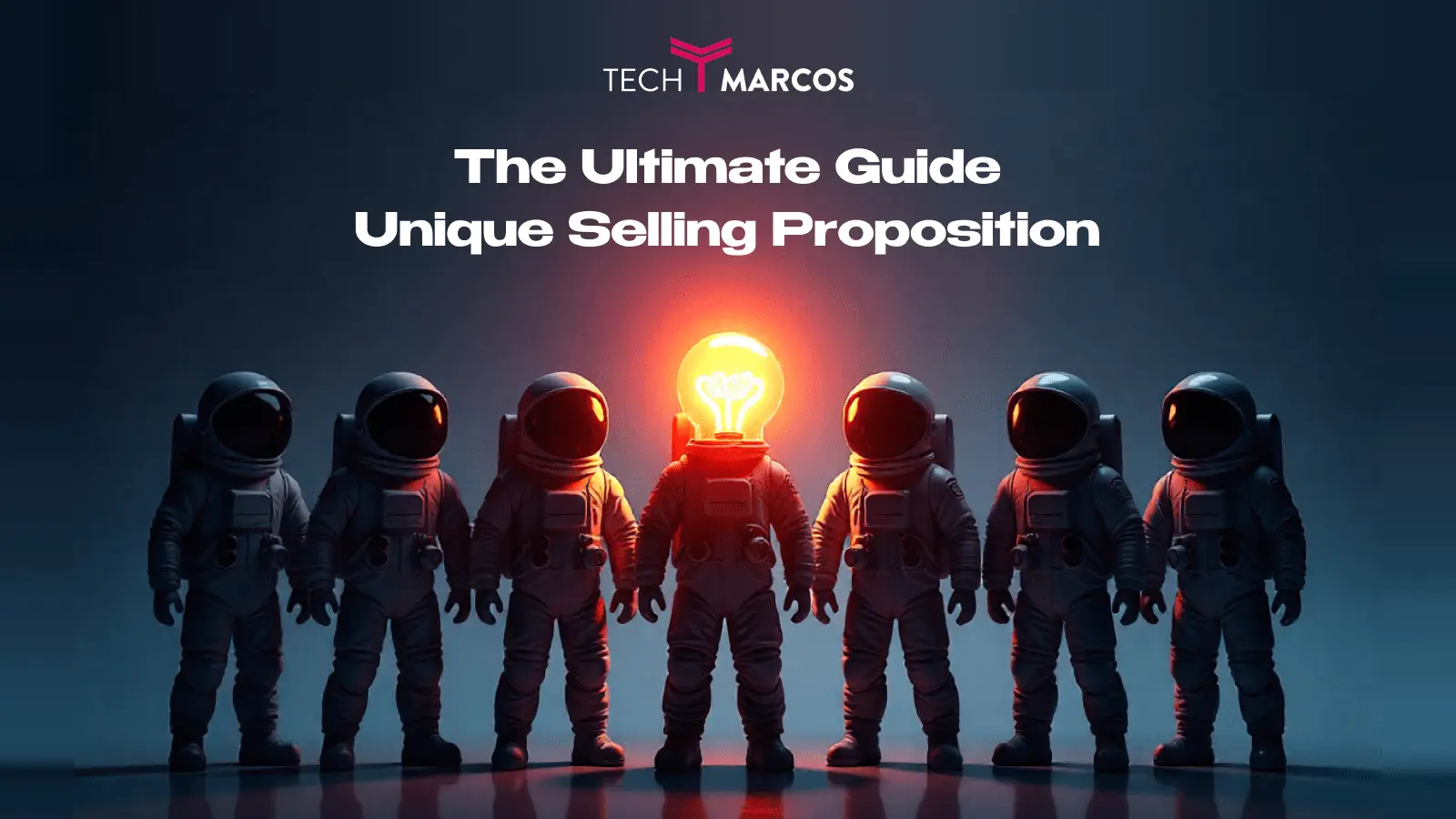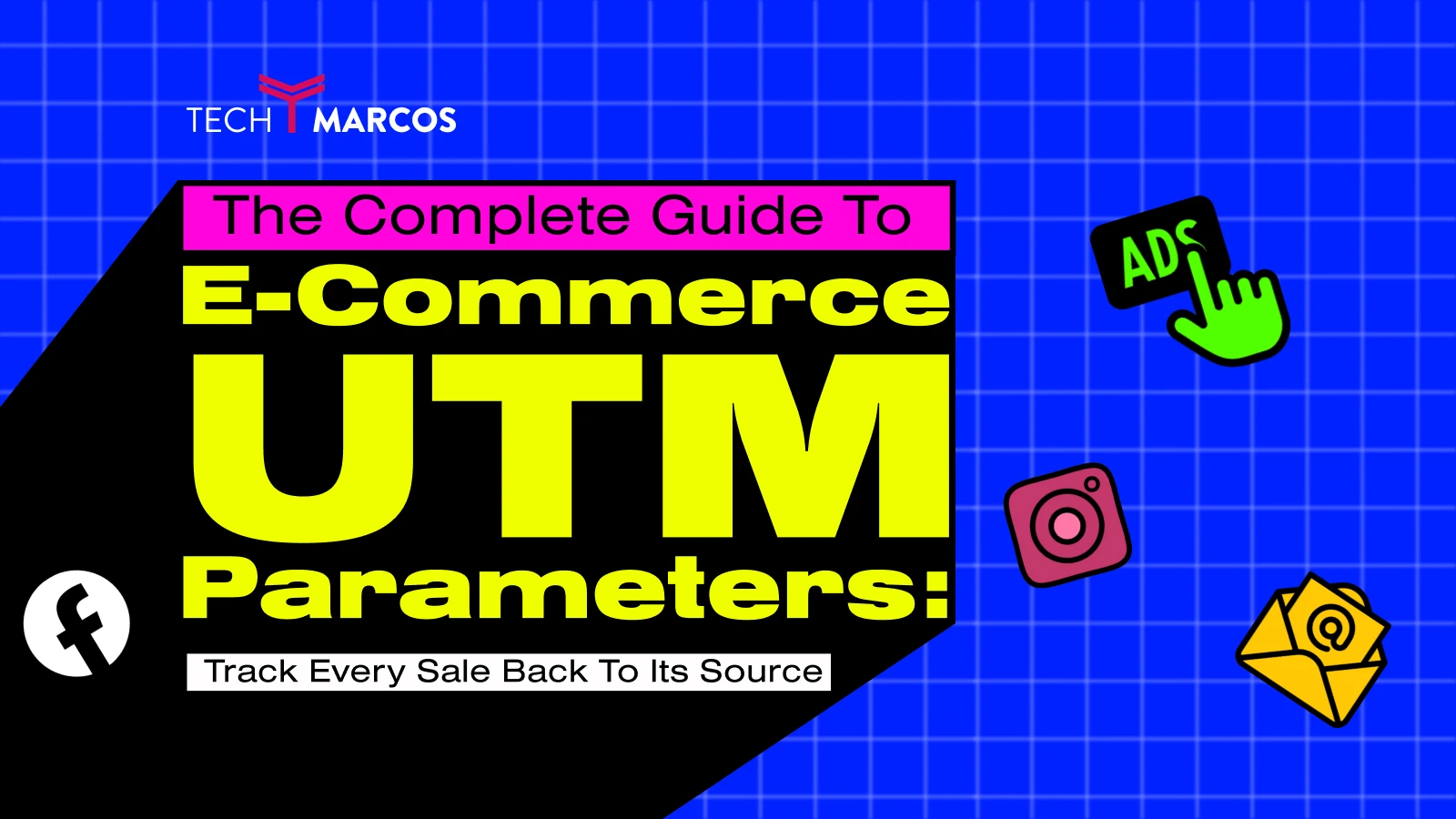How a Strong Unique Selling Proposition (USP) Can Make People Choose You Every Time
What is a Unique Selling Proposition?
A unique selling proposition (USP) or a unique selling point is a concise sentence which states what advantage your business has to offer, how your product or service addresses the issues of the customers, and why they should prefer to use you over others. Your competitive advantage is based on your USP and forms the key to your marketing strategy.
In the modern saturated market, where customers have unlimited options and attention span that is becoming shorter each minute, a strongly developed USP is not only useful but a must to survive and develop a business.
Why Your Business Needs a Strong USP
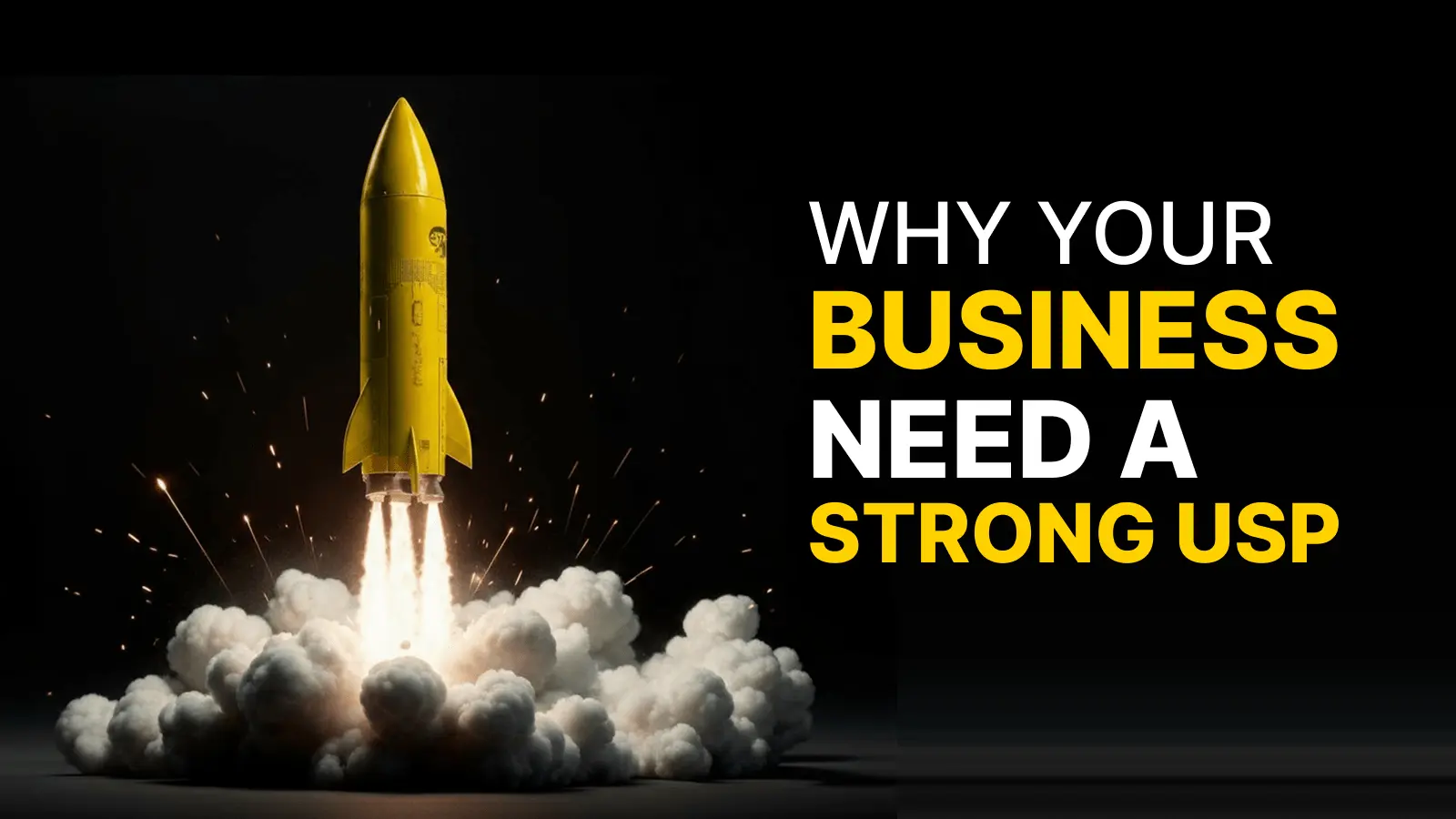
The Benefits of a Well-Defined USP
Customer clarity: A strong USP is a direct statement of your value offering, which makes customers perceive the difference of your brand in a few seconds.
Marketing efficiency: Having a clear USP, any marketing campaign, any post on social media, and any sales conversation becomes more targeted and efficient.
Brand consistency: Your USP is a north star to all business decisions and it makes all business decisions sound as one throughout all customer touchpoints including your website contents, in-person communication.
Competitive differentiation: Your USP will help to distinguish you among the other markets hence this will be easier to choose you over the others in case of any competition in the market.
Higher conversion rates: This will be easy to pick you out of the rest of the markets since your USP will be used to differentiate you among the other markets in case of competition in the market.
USP vs Value Proposition: Understanding the Difference
While often used interchangeably, your unique selling proposition and value proposition serve different purposes:
Value Proposition:A generalized statement that informs customers of the general value they gain through your product or service. It captures interest and gives you a reason as to why what you are offering is important.
Unique Selling Proposition: A more detailed message that will make customers purchase you rather than rivals. It provides emotional individualisation.
Think of it this way: your value proposition attracts customers, while your USP converts them into buyers and brand advocates.
The 4 Core Categories of Every USP
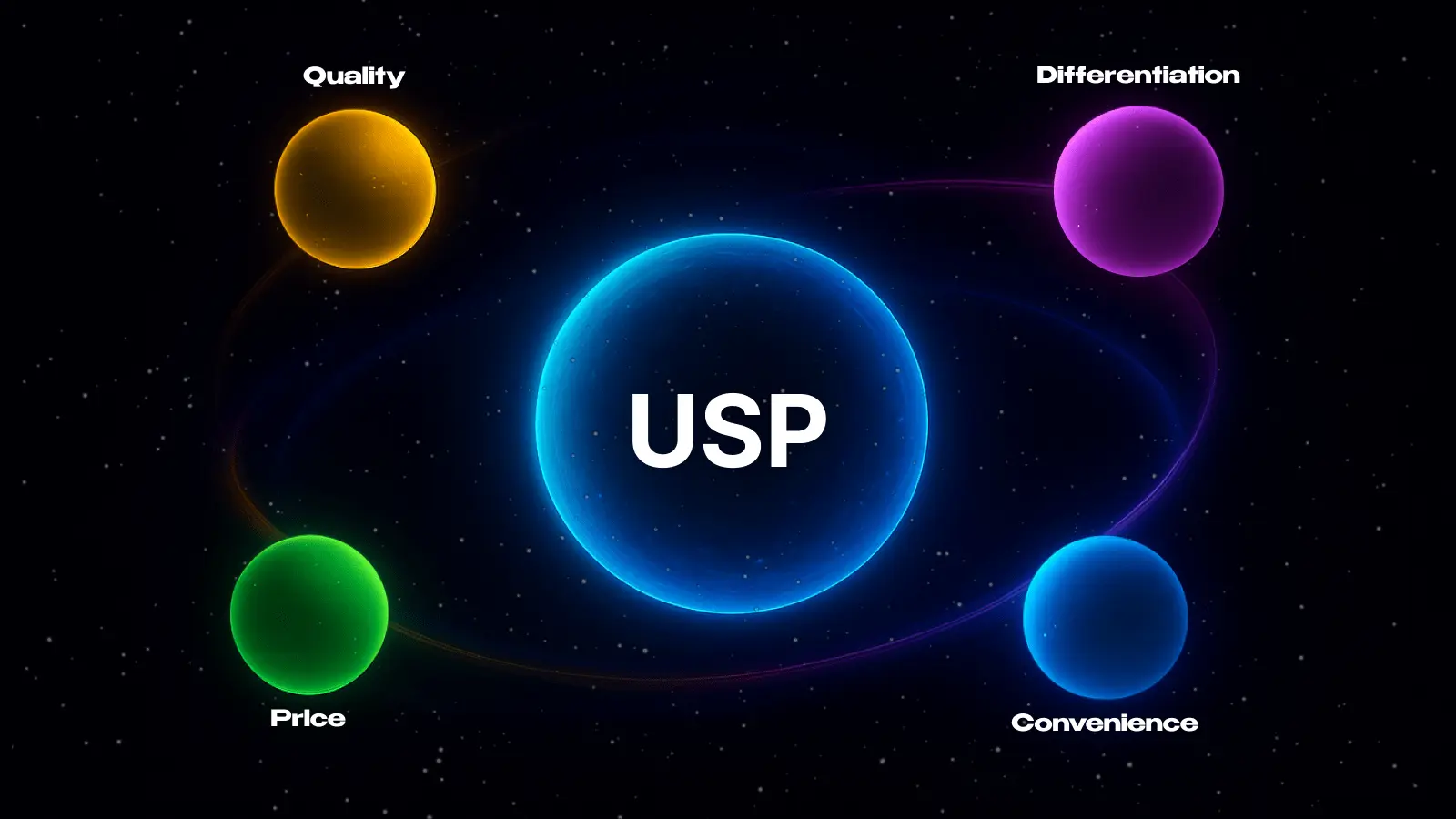
Every successful USP falls into one or more of these strategic categories:
1. Price-Based USP
Your product is the best priced in the market. This will be effective when you are able to keep your costs low in a sustainable manner when compared to the competition.
Example: "Find a lower price and we'll match it" (Best Buy)
2. Quality-Based USP
Your product or service offers high quality, workmanship or performance over alternatives.
Example: "The World's Strongest Coffee" (Death Wish Coffee)
3. Convenience-Based USP
You make the buying process, delivery, or product usage easier than anyone else in your industry.
Example: "Fresh hot pizza, delivered in 30 minutes or less or it's free" (Domino's Pizza)
4. Differentiation-Based USP
Your product or service is unlike or totally different to what is available in the market and it is a way of solving problems in a new manner.
Example: "Try 5 frames at home for free" (Warby Parker)
How to Create a Unique Selling Proposition: Step-by-Step Guide
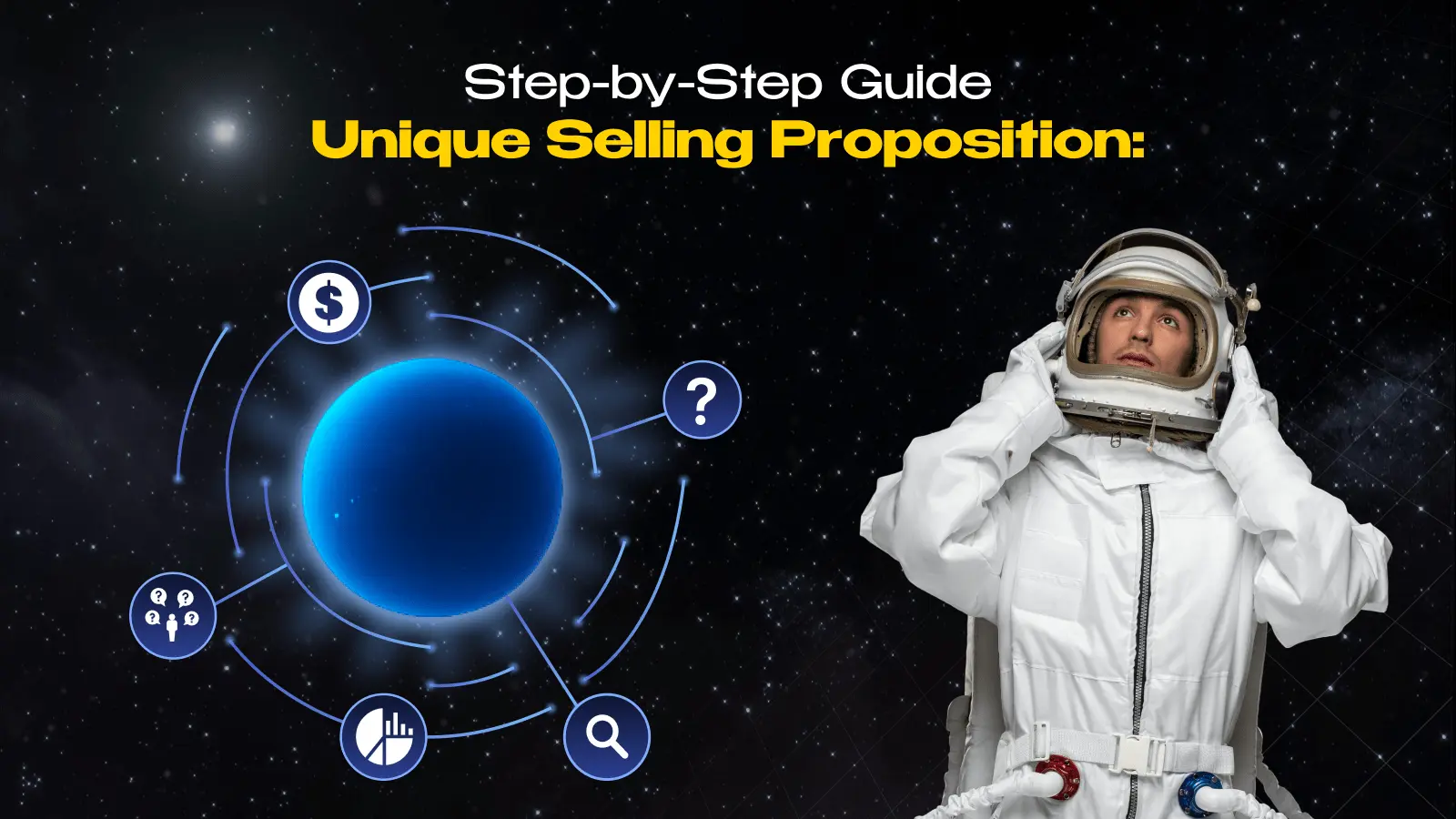
Step 1: Conduct Comprehensive Market Research
Get useful information by conducting surveys, talking to customers, monitoring social media, and using analytics tools. Make data-driven judgments instead of guesswork.
Research is the first step in making a good unique selling point. This is what you need to know:
Customer problems: What are some things that your target audience is worried about? What problems do they have with the solutions that are already out there?
Market gaps: What are the things that your competitors don't do well? What needs in your field are not being met?
Trends in your field: What new trends could you take advantage of? How is your market changing?http://getadblock.com/
Customer behavior: What do customers do? How do people in your field research, compare, and buy products?
Think with Google – Consumer Insights
You can get useful information by doing surveys, talking to customers, keeping an eye on social media, and using analytics tools. Instead of guessing, make decisions based on data.
Step 2: Define Your Target Audience with Precision
Generic marketing appeals to no one. Instead, make detailed customer profiles that include:
- Demographics (age, where you live, how much money you make, what you do for a living)
- Psychographics (values, interests, way of life, and reasons for doing things)
- How people buy things (what channels they prefer, how they make decisions, and how much they can spend)
- What they want to avoid or achieve (their pain points and goals)
Customer segmentation is a great way to make the most of your most valuable customer groups. Not all customers are equally valuable. You should focus on the ones who are most likely to buy something and come back as a customer.
Step 3: Analyze Your Competition Thoroughly
Understanding your competitive landscape is crucial for differentiation. Examine:
Competitor USPs: What unique selling propositions are your competitors promoting? Which of these connect well with buyers?
Strengths and weaknesses: In which areas do competitors perform strongly? Where do they struggle?
Market positioning: How do competitors position themselves? What assurances do they offer?
Customer reviews: What do customers appreciate about competitors? What issues come up repeatedly?
Create a competitive analysis matrix to visualize where opportunities exist for differentiation.
Step 4: Identify Your Unique Selling Points
This requires brutal honesty about your business. Ask yourself:
- What do we do better than anyone else?
- What unique capabilities, resources, or expertise do we have?
- What can we credibly claim that competitors cannot?
- What aspects of our business model create natural advantages?
Take into account the four Ps of marketing (product, price, place, promotion) and an additional P: people. One of the possible sources of your USP is product innovation, proprietary technology, exceptional service, company values or team expertise.
Important: Your USP must be defensible. Don't claim something you can't consistently deliver or that competitors can easily replicate.
Step 5: Root Your USP in Business Values
The surface USP does not have any staying power. The best unique selling propositions are those that are linked to more company values and mission.
Ask yourself:
- Why does our company exist beyond making profit?
- What do we stand for?
- What legacy do we want to create?
The closer your USP is to the true values of business, the more it can be related to customers and internal decision-making. Customers are also demanding brands that can mean something to them and particularly the younger generations.
Step 6: Focus on Customer Benefits, Not Features
This is one of the pitfalls: You enumerate the features of the product rather than the benefits to the customer.
Features describe what your product has or does.
Benefits explain how those features improve customers' lives. For example:
- Feature: "24-hour customer service"
- Benefit: "Get help whenever you need it, so you're never stuck"
Your USP should speak to outcomes and transformations, not specifications. As the Revlon founder famously said: "In our factory, we make lipstick. In our advertising, we sell hope."
Step 7: Craft a Compelling, Concise Message
You have all the research done now, and now it is time to write your USP. Efficient unique selling propositions are:
Clear: Use simple language anyone can understand
Concise: Ideally one sentence, maximum two
Specific: Avoid vague claims like "best quality" or "great service"
Credible: Make promises you can keep
Compelling: Create urgency or desire
Customer-focused: Emphasize "you" and "your" over "we" and "our"
Test different versions with real customers.A/B testing could provide information about what kind of messaging is the most effective.
Step 8: Test, Measure, and Refine Your USP
Your USP isn't carved in stone. Markets evolve, competitors adapt, and customer needs change. Continuously:
- Track the rates of conversion(UTM Tracking Guide) and customer feedback.
- Measuring which messaging works best on channels.
- Be sensitive to the changes in the market and the competition.
- Ask the sales team to give feedback on what is hitting in the conversation.
- Ask survey customers what drew them into your brand.
Be willing to evolve your USP as your business grows and market conditions change.
15 Inspiring Unique Selling Proposition Examples
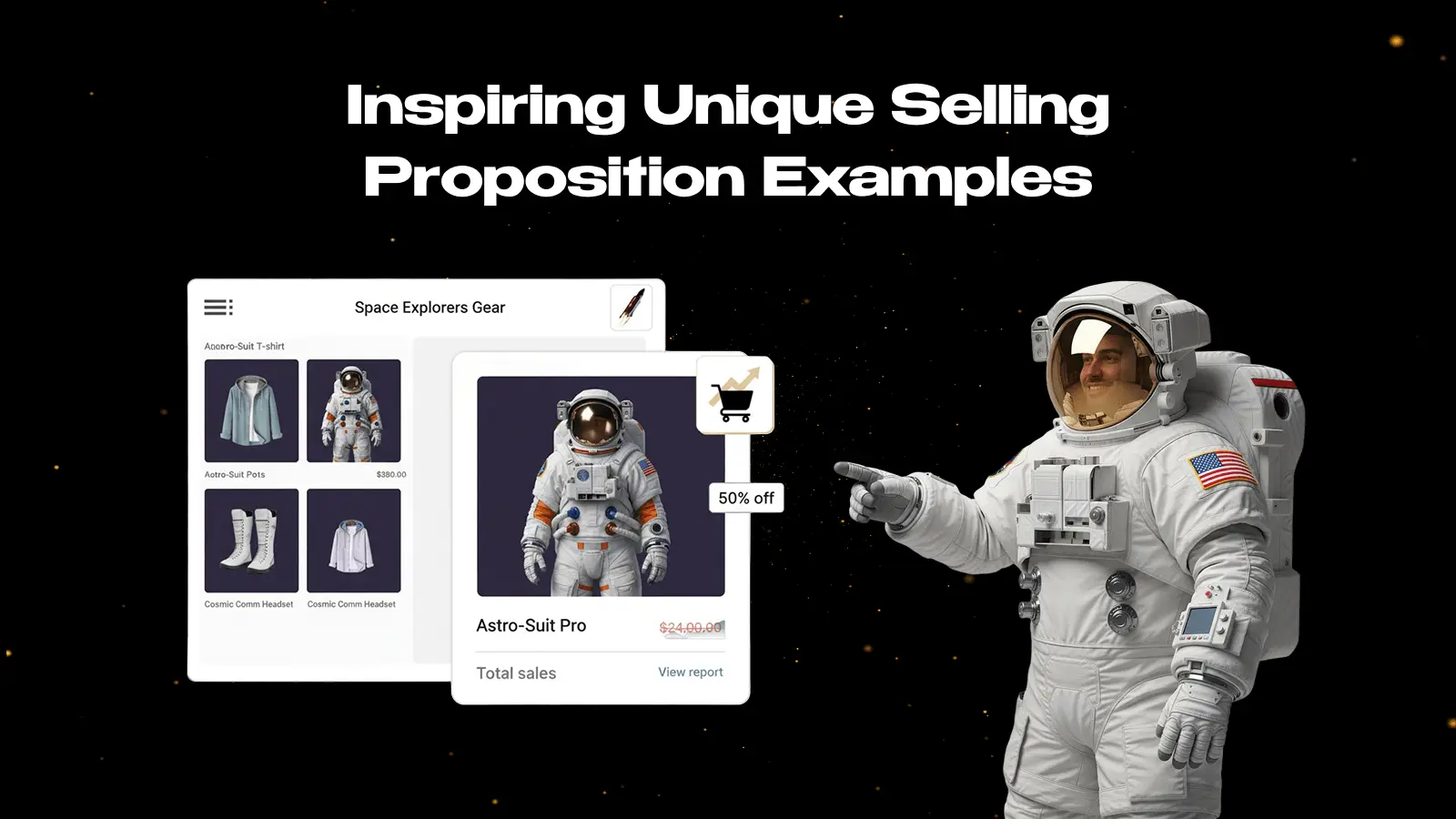
1. GEICO Insurance
"15 minutes could save you 15% or more on car insurance."
Why it works: Set time, clear benefit, and memorable repetition. It answers the two biggest reasons people don't want to switch insurance: time and money.
Time in it, definite value, repetition to remember. It focuses on the two commonest reasons to resist switching insurance: time and money.
2. Domino's Pizza
"Fresh hot pizza, delivered in 30 minutes or less or it's free."
Why it works: Sets clear goals, takes away risk, and solves the problem of hunger now. This unique selling point changed the way pizza is delivered.
3. Death Wish Coffee
"The World's Strongest Coffee."
Why it works: Clear and bold differences in a crowded market. Appeals to a certain group of customers who like a lot of caffeine.
4. Canva
"Empowering the world to design."
Why it works: Makes the product seem like it is available to everyone, not just professional designers. Makes a skill that used to be hard to get accessible to everyone.
5. Patagonia
"We're In Business to Save Our Home Planet."
Why it works: A USP based on values that draws in eco-friendly customers. Goes beyond the product to the purpose.
6. HelloFresh
"America's Most Popular Meal Kit."
Why it works: Uses social proof and makes people feel like they have to act now. It must be good if everyone is using it.
7. Tiffany & Co.
"The right one is worth waiting for."
Why it works: Makes an emotional connection, explains why the price is high, and makes sure that the quality of the product matches love and patience.
8. Warby Parker
"Try 5 frames at home for free."
Why it works: This solves the biggest problem with buying glasses online: not knowing how they will fit and look. Takes away risk.
9. American Musical Supply
"Rock now! Pay later."
Why it works: Tells people about your brand's personality while getting rid of financial barriers. Makes instruments that cost a lot of money available.
10. Best Buy
"Find a lower price and we'll match it."
Why it works: It builds trust, makes it easier to shop, and makes Best Buy look like a customer-focused store.
11. Slack
"Where work happens."
Why it works: Simple, broad, and aspirational. Puts Slack at the center of all work-related communication.
12. M&Ms
"Melts in your mouth, not in your hands."
Why it works: Fixes a certain problem with chocolate in a fun and memorable way. Product benefit as a unique selling point.
13. FedEx
"When it absolutely, positively has to be there overnight."
Why it works: Stresses reliability and speed. Appeals to customers who want to be sure their order will arrive on time.
14. Dollar Shave Club
"Shave time. Shave money."
Why it works: Smart wordplay, clear benefits (savings and convenience), and a break from the usual razor market.
15. Avis
"We're number two. We try harder."
Why it works: Makes a weakness into a strength, which means better customer service and memorable honesty.
How to Communicate Your USP Effectively
If customers never hear about your great USP, it doesn't matter. Use your unique selling proposition in all of the following:
Digital Channels
- Website homepage: Put your unique selling point (USP) front and center
- Landing pages: Your USP should be front and center on every campaign landing page.
- Social media profiles: Put your USP in the "About" and "Bios" sections
- Email marketing: In the subject lines and body of your emails, talk about your USP.
- Online advertising: Make your ad copy based on your USP messaging.
Traditional Channels
- Print advertising: Put your USP in the headline or tagline.
- In-store signage: Put your USP where customers can see it
- Sales presentations: Start with your USP to set the tone for conversations.
- Packaging: Put your USP on the packaging of your product.
- Business cards: Add a tagline that shows off your unique selling point.
Team Communication
- Sales scripts: Train sales teams how to clearly explain the USP.
- Customer service: Make sure that support teams know and can explain the USP.
- Employee onboarding: Include your USP in training for new employees.
- Internal meetings: When making strategic decisions, think about your USP.
The most important thing is to be consistent. Every interaction with a customer should reinforce your unique selling proposition, making the brand experience more cohesive.
Common USP Mistakes to Avoid
1. Making Your USP Too Generic
Vague claims like "best quality," "excellent service," or "affordable prices" don't differentiate you. Every rival makes the same claims. Tell us exactly what makes you different.
2. Forgetting to Put Customers First
Your USP isn't about you; it's about the people who buy from you. Don't talk about features you're proud of; instead, talk about benefits and results that matter to them.
3. Creating Inconsistent Messaging
Customers get confused when your website, sales team, and social media all say different things. Alignment is very important.
4. Building a USP Without Depth
Customers will see through your USP if it isn't based on real business values and skills. Claims that aren't true hurt credibility.
5. Partnering with Companies That Contradict Your USP
Customers will see the inconsistency if you market yourself as an environmentally friendly brand but work with suppliers that pollute. Your whole supply chain should be in line with your USP.
6. Claiming Something You Can't Deliver
Don't promise something you can't always deliver. One bad experience can ruin the trust that your USP built.
7. Being Too Narrow or Too Broad
If you make it too small, you won't be able to grow in the future. You don't stand out if you are too broad. Find the right balance between growth and staying focused.
8. Neglecting to Evolve Your USP
The needs of customers change, the markets change, and the competitors change. A unique selling point (USP) that worked five years ago might not work today. Be open to change.
Advanced USP Strategies for Different Business Types
For Service-Based Businesses
Focus on the process, the knowledge, or the results. "We respond to all inquiries within 2 hours" and "Certified specialists with 15+ years of experience" are two examples.
For E-commerce Businesses
Emphasize how easy it is to shop, the wide range of products, or the one-of-a-kind items. "Free shipping and returns, always" and "Curated collections you won't find anywhere else" are two examples.
For B2B Companies
Focus on ROI, effectiveness, or knowledge. "Cut operational costs by 30% in 90 days" and "Enterprise solutions with 24/7 dedicated support" are two examples.
For Local Businesses
Use your connections in the community, your knowledge of the area, or your personalized service. Some examples are "Family-owned and operated in [City] since 1985" and "Your neighborhood experts."
For Startups and Disruptors
Focus on new ideas, new ways of doing things, or finding new ways to solve old problems. For example, "The first [product category] made just for [niche audience]."
Measuring the Success of Your USP
Track these metrics to evaluate your USP's effectiveness:
Conversion rate: Are more people who visit your site becoming customers after you add your USP?
Customer acquisition cost: Has making your USP clear made marketing work better?
Brand recall: Do customers remember your unique selling proposition (USP) and can they say it?
Customer feedback: What do customers say about what drew them to your brand?
Competitive win rate: Are you beating your competitors more often?
Customer lifetime value: Do customers who connect with your USP stay with you longer?
Use A/B testing to see how different USP formulations work and keep improving your messaging.
Creating a USP When You're in a Commoditized Market
You can still come up with a strong USP in industries that are very competitive and have a lot of similar products by:
Reframing the category: Take a different look at your business. TOMS Shoes sells shoes, but what makes them unique is how they help people.
Targeting underserved niches: Take over a part of the market that your competitors don't pay attention to.
Competing on experience: If your products are similar, make your customer experience stand out.
Building on brand values: Get in touch with customers who have the same values and way of seeing the world as you do.
Bundling unique services: Add services to your product that your competitors don't offer.
Leveraging your story: Talk about your background, mission, or method in ways that make people feel connected.
Your USP Action Plan
Ready to develop your unique selling proposition? Follow this action plan:
Week 1: Do research on the market and your competitors. Talk to customers and look at the data.
Week 2: Be very clear about who your target audience is. Make detailed profiles of your customers.
Week 3: Figure out what you're good at and what makes you special. Do a SWOT analysis.
Week 4: Write down 5 to 10 possible USP statements. Try them out with customers and team members.
Week 5: Make your USP better. Make rules for how to send messages so that they are always the same.
Week 6: Use your USP in all of your marketing channels. Teach teams how to send the right messages.
Ongoing: Keep an eye on performance, get feedback, and make improvements all the time.
Conclusion: Your USP is Your Competitive Advantage
The most effective marketing tool that you have in the world where customers have an infinite choice and scarce attention is your unique selling proposition. It is the basis of your brand positioning, the heart of your marketing message, and why customers will prefer you to your competition.
Not any catchphrase is a good USP, but a strategic business choice that has an impact on product creation, customer experience, marketing activities, and sales dialogues. It provides your team with focus, your customers with assurance and your business path.
Make time to formulate your USP. Bases it on customer research, competitive analysis and authentic business values. Make it customer-oriented, strong and particular. Thereafter disseminate it through all points of contact with customers.
Your USP is more than words on a page. It's your promise to customers, your competitive advantage, and your pathway to standing out in a crowded market. Make it count.
Frequently Asked Questions About USP
How long should a USP be?
Ideally one sentence, maximum two. Memorable USPs are the best since they are short. Unless you can say it fast, then you cannot remember by customers.
Can I have multiple USPs for different products?
Although the various products might possess distinct features, your general brand should possess a single USP that brings about unity. Positioning statements can be placed on individual products and lead to your overall USP.
What if my competitor copies my USP?
This is the reason why your USP must be based on the actual competencies and values. When your USP is founded on what you are really good at (proprietary technology, unique process, particular expertise), then competitors cannot easily copy it.
How often should I update my USP?
It is important to review your USP after every one year but only when there is a good reason to do so. Brand recognition is created through consistency. But when the market circumstances change drastically, your business will be restructured, or your USP will no longer appeal, then you must be ready to change.
Do I need a different USP for different markets?
Your USP must always be the same; however, you can highlight some other points when targeting the various market segments. The major advantage remains the same, only that you could formulate it in different ways depending on the requirements of the audience.
Can a small business compete with big brands using a USP?
Absolutely. In many cases the small businesses benefit large companies do not, or cannot, physical personal service, flexibility, local expertise, or specialization of the niche. These distinct advantages should be brought out in your USP.
What if I offer multiple services?
Get to the gist of all you are offering. What is the general advantage of your entire services? The USP should be an umbrella which can encompass all that you do and yet be specific to be able to distinguish you.
